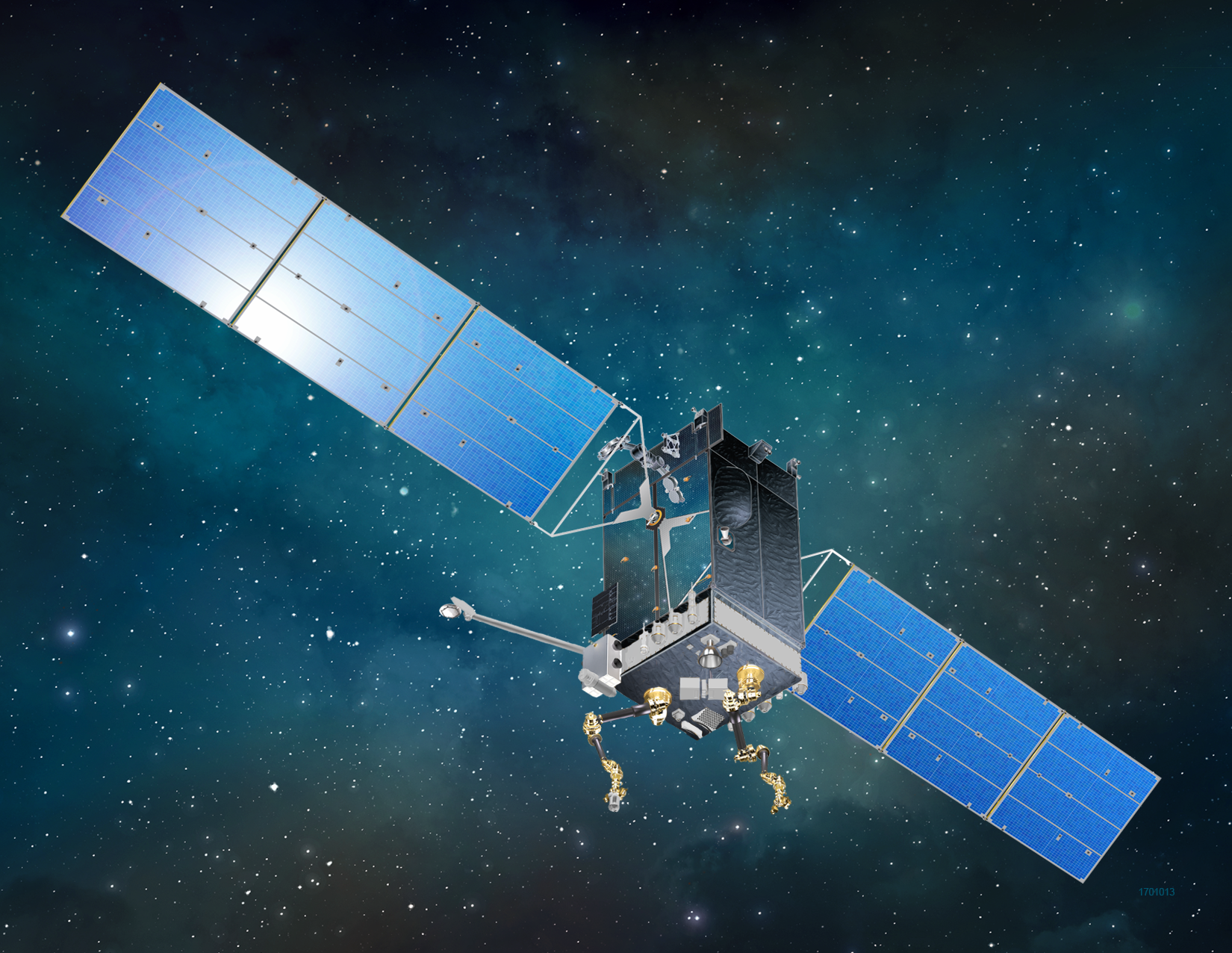
An artist rendering of robotic arms servicing a commercial satellite in Geosynchronous Earth Orbit. DARPA illustration.
—Gideon Grudo
Space Systems Loral, recently partnered with DARPA on a satellite-servicing project, is already partnered with DARPA and NASA on two other programs, both aimed at modifying satellite culture in space.
SSL’s recent project with DARPA, the Robotic Servicing of Geosynchronous Satellites (RSGS), is the subject of a lawsuit from space tech developer Orbital ATK. The early February suit against DARPA alleges the RSGS partnership misappropriates tax dollars and violates federal space policy, among other things. But SSL engineers have got their hands in more than just RSGS.
“Space is a critical architecture and infrastructure. It’s used by you and me in our daily business,” and by governments, industries, and militaries, said Steve Oldham, SSL’s senior vice president of strategic business development. And yet, he added, “unlike every other form of infrastructure, nobody services it. It’s a throwaway culture.”
“Maintenance and servicing haven’t existed in space to-date” because the technology isn’t there, Oldham said, noting that a broken antenna on a satellite is a multi-million dollar write-off.
SSL’s Restore-L and Dragonfly programs aim to change all that.
The first is in partnership with NASA. Tagged Restore-L, it aims to use robotics to grab, refuel, and relocate when necessary US satellites in low earth orbit (LEO), or about 100 to 1,200 miles above the planet. The overall aim is life extension for satellites.
This mission is planned for a 2020 launch and will specifically target NASA’s Landsat 7 satellite, which NASA calls “the most accurately calibrated Earth-observing satellite.” Oldham told Air Force Magazine Restore-L technologies are “synergistic” with the RSGS capabilities (that’s the SSL and DARPA project mentioned above), and the spaceship will be used “to support future government and commercial missions.”
At the same time, the Restore-L program is significantly different from the RSGS program in three major ways, according to DARPA. While engineers from both programs communicate regularly, Restore-L’s hardware isn’t designed for national security capabilities like RSGS’s will be. Further, Restore-L will “rely heavily” on ground operators while RSGS “must perform many of its missions autonomously,” according to a DARPA release. And finally, Restore-L is aimed at, well, restoring, whereas RSGS is aimed at upgrading or replacing “faulty hardware and repairing stuck assemblies.”
The second program SSL is working on with NASA and DARPA is a two-year project called Dragonfly. It focuses on in-space assembly (ISA), and is based on a 2016 joint SSL/DARPA study by the same name, which sought to figure out the “commercial applicability and economic advantages of ISA.” While ISA is nothing new, the Dragonfly program expands it beyond government-specific capabilities and allows the private sector to develop its potential, and specifically apply it in geostationary orbit (GEO). Using Mars rover and Phoenix Lander technology, Dragonfly deploys an ultra-light-weight robot to perform in-space antenna assembly.
This is what Dragonfly capabilities might look like:
The overall goal of the Dragonfly project is to change the culture of requirements in space operations. Where today a satellite system’s operational capability is dictated by the size of its launch requirements, ISA would shift the paradigm to where operations could be unshackled from launch constraints.
‘Fight against that’
Orbital ATK sued DARPA after the agency announced its partnership with SSL for the RSGS program in early February. One of claims in the lawsuit: The partnership violates a clause in federal space policy advising agencies against funding capabilities already available in the commercial space.
While Orbital ATK wouldn’t comment on the lawsuit, a spokesperson pointed Air Force Magazine toward its Mission Extension Vehicle (MEV) program. The company bills the technology as a “first in the industry,” aimed at extending the life of “healthy satellites.”
“ATK is already investing its own private capital to develop in-space satellite servicing that includes satellite life extension, to be followed by robotic in-space repair and assembly capabilities,” according to a statement from Orbital ATK. “Orbital ATK will continue to pursue all available options to oppose DARPA from moving forward with this illegal and wasteful use of US taxpayer dollars.”
Oldham told Air Force Magazine, however, there’s a significant difference between the two programs, citing RSGS’s focus on “long-term, sustainable architecture.”
“I’m sure Orbital has plans to enhance it but I wonder why they didn’t just bid to DARPA. From our perspective—we’ve had lots of discussions with Orbital—it’s completely different architecture,” he said. “Every US company had the opportunity to bid. If Orbital has capabilities as applicable as they said, in their shoes, I’d have bid instead of sued their customer.”
According to the space policy, agencies will “Refrain from conducting United States Government space activities that preclude, discourage, or compete with US commercial space activities, unless required by national security or public safety.”
SSL, though headquartered in Silicon Valley, is a subsidiary of MacDonald, Dettwiler and Associates (MDA), a publicly? traded Canadian firm. But Wendy Lewis, SSL’s director of communications, told Air Force Magazine the Canadian connection is not so simple: SSL is “100 percent US-owned,” having been incorporated in Delaware. The CEO and the entire board of directors are US citizens, and in 2017 DOD and SSL MDA signed a security control agreement to “mitigate” foreign ownership, control, or influence issues
Lewis added the “US government will be paid back for all of its investment in services,” referencing the litigious RSGS program.
“The value of repairing just one critical national security space system could more than compensate for the entire cost of DARPA’s investment,” she wrote in an email. “RSGS is a public private partnership that saves taxpayer money by sharing costs with commercial industry and it is interesting to see how hard more established government contractors are willing to fight against that.”